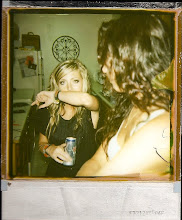--How were young filmmakers in the late 1960s and early 1970s different from previous generations of filmmakers in terms of the following: how they broke into commercial filmmaking, how their films were financed, and who was in charge of the studios?
- The article states, "Bonnie and Clyde was produced by the 29-year-old star Warren Beatty for Warner Bros., and The Graduate was directed by the 34-year-old Nichols, inspiring several studios to hire younger, nontraditional producers and directors to appeal to a younger clientele." This sudden popularity of youth films such as these and Easy Rider led not only to the hire of those younger new generation filmmakers, and making the door to commercial film a little easier to get into, but it also led to lower budget films. "Easy Rider (Dennis Hopper, 1969)--produced by the independent BBS Productions for $375,000 and returning $19 million," which had a huge impact on the studios. These films seemed to be popular with the new generation despite the low budgets, so even more were produced. During this era, "the studios were one-by-one absorbed by larger, more diversified companies--all of the studios but Twentieth Century Fox, Columbia, and Disney."
--Compare and contrast Martin Scorsese with at least one other “Film School Generation” filmmaker, and explain why Cook suggests that in the early eighties Scorsese “was no longer a player in the New Hollywood.”
- "Martin Scorcese may have attained that goal of authorship more fully than any of his peers by consistently maintaining the quality of his art at the expense of its commercial viability," which I believe is one reason why the author, Cook, explains why in the early eighties Scorcese "was no longer a player in New Hollywood. Unlike his other auteur colleagues of the period, Scorcese continued to make self-reflected work despite the success it had in the box office if they even made it to mainstream theaters at all. A great example of this idea of Scorcese's continuous dedication to express himself through auteur filmmaking, is in the huge contrast between him and his fellow filmmaker of the period, Spielberg.
- Spielberg's Jaws, for example, was so successful that it "permanently hooked the industry on blockbuster windfalls." Spielberg's career continued on to make other successes, but it was his "collaboration...on the Indiana Jones series that would make him the dominant commercial force in American cinema for the next twenty years..." As opposed to Scorcese, Spielberg seemed to be aimed less concerned with expressing himself through his films and more concerned with the mass commercial profits and success he would make. Well, maybe that is a little bit of an assumption. He may not have been as concerned with commercial success as it would seem he was, but his films surely made a bigger bang in the commercial film industry at the time than those coming from Scorcese. Scorcese's films of this period were dark and said to be "an exploration of Catholic sadomasochism" which was less appealing to those audiences than the drastic comparison of Spielbergs films of "childhood wonder."
- So Scorcese was said to no longer be a player in New Hollywood by the early 80's, because his films were barely making profits, at least not profits like the other filmmakers were making at this time.
Todd Berliner, “The Pleasures of Disappointment: Sequels and The Godfather, Part II.”
--Give two specific examples of how Part II disappoints the viewer (according to Berliner) and how these disappointments “work” for the film.
- "The Godfather, Part II makes a success out of was sequels typically do in failure: it does what the original did but in a way that is less satisfying...the movie's success at failure is a source of pleasure for audiences, pleasure that paradoxically emanates from an experience of conspicuous disappointment."
- One example is how "[e]ven the murders in Part II let us down." Although the murders may seem graphic when described to someone, it is not the actual murders that are disappointing, but it is the way "the movie treats them so nonchalantly that the result is forgettable." And some of the murders just aren't as thrilling and intriguing as the ones in the first one.
- "Several events in Part II seem to repeat events from the original picture. Both movies introduce their characters to us at religious celebrations, for example." In Part II, "Anthony's celebration has none of the familial feeling or ethnic flavor of Connie's wedding." It seems less warm, and much more business like, unlike the first one.

1 comment:
Note the role of film schools and be sure to know the new studio owners (the conglomerates).
Re: Scorsese: Also think about how his films did not lend themselves to the kind of commodification and product licensing associated with the blockbusters (esp. Star Wars).
Post a Comment